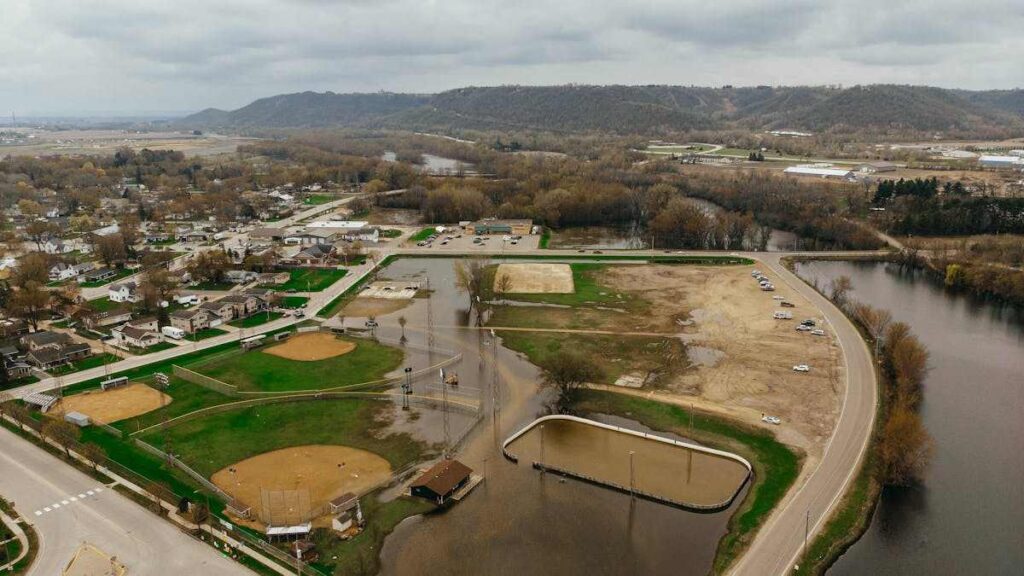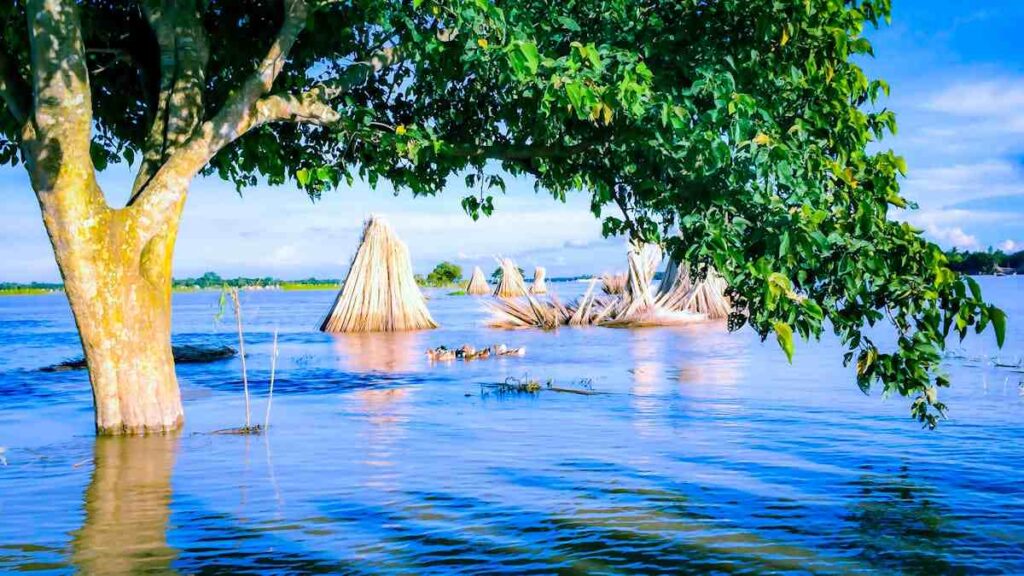
Flood preparation is an essential part of protecting towns and households from the disastrous effects of rising waters. Understanding how to successfully prepare can make a huge difference in limiting damage and maintaining safety as floods become more frequent and severe due to climate change.
A flood is an overflow of water onto typically dry ground, usually caused by extreme rainfall or a dam or levee failure that causes rivers and streams to overflow their banks. Floods can grow slowly or quickly.
Being prepared and taking mitigation measures, such as building away from floodplains and elevating homes, can lower the risk of flood-related damage and injuries.
5 Ways of Flood Preparation
Flood preparation is essential for minimizing damage and maintaining safety. Here are five excellent strategies to prepare:
Create an Emergency Kit
Put together a kit with necessities such as water, non-perishable food, prescriptions, a flashlight, batteries, and crucial documents. Make sure it is easily accessible.
ALSO READ: Connecticut Begins Long Road to Recovery After Deadly Floods
Create a Family Communication Plan
Ensure that all family members understand how to contact one another and where to meet in the event of an evacuation. Practice the plan on a regular basis.
Protect Your Home
Install sump pumps, raise electrical appliances, and seal basement walls using waterproofing materials. Consider placing flood barriers or sandbags around your property.
Stay Informed
Follow weather predictions and flood warnings. Register for local alarm systems and keep a battery-powered radio on hand.
Review Your Insurance
Check your homeowner’s insurance policy to see if it covers flood damage. If not, consider obtaining more flood insurance.

Flood Preparation with Kids
Preparing for a flood with children necessitates additional preparations to protect their safety and comfort. Here are some pointers to help you get prepared:
Involve Them in Planning
Explain the problem to them in an age-appropriate manner, and have them help create the emergency kit. This can alleviate their anxiousness and make them feel more in control.
Make a Kid-Friendly Emergency Kit
Include items like their favorite snacks, toys, books, and comfort supplies. Also, remember to pack diapers, formula, and medications if needed.
Evacuation Drill
Make sure your children are familiar with the evacuation plan and rehearse it on a regular basis. This includes understanding how to travel to higher ground and where you should meet if you become separated.
Teach Safety Measures for Flood Preparation
Inform your children about the risks of floodwaters, such as not playing in or near them, and the need to listen to adults during an emergency.
Stay Calm and Reassuring
Children frequently follow signals from adults, so remaining calm and positive can make them feel more comfortable. Reassure them that you have a plan and that they will be safe.
POLL—Do You Support a Single-Payer Healthcare System (Medicare for All)?
What To Do After a Flood?
Although floodwaters have receded in some regions, several threats remain. Here are a few things to remember in the days ahead: Avoid the movement of water. Stay away from affected regions until specifically requested by police, fire, or humanitarian organizations.
Emergency workers will help people in flood-affected areas. You can help them by remaining off the roads and out of their way.
Also, maintain a cautious attitude and keep an ear out for local cautions and updates. If your automobile stalls in rapidly rising water, get out quickly and ascend to higher ground. Return home only when authorities declare it safe.

What Should I Do During a Flood?
During a flood, water levels and flow rates can fluctuate quickly. Continue to be vigilant and watch local radio and television stations. Avoid flood waters at all costs and flee as soon as the water begins to rise.
WATCH: Clever Hacks That Prevent Crying While Cutting Onions
If possible, listen to radio and television, particularly NOAA Weather Radio, as well as the Internet and social media, for information and updates. If you live in a flood-prone location or are camping in a low-lying area, you should move to higher ground immediately.
If told to evacuate, do so right away. When you leave, make sure to lock your house. If you have time, turn off your utilities and appliances.
One of the most devastating floods in American history, the Mississippi Flood of 1927, serves as a harsh reminder of the significance of flood preparation. Thus, it is important to incorporate the above tips and tricks.
You Might Also Like:
Surprise! Olivia Munn and John Mulaney Have Another Baby
Shyne Barrow Breaks Silence on Sean Combs’ Arrest, Opens Up About Their Sordid History
Kaitlyn Conley Breaks Her Silence, Denies Killing Ex-Boyfriend’s Mother
Eric Roberts Extends Olive Branch to Sister Julia Roberts with Public Apology
Must-Know Bridal Shower Tips to Make Your Event Unforgettable

